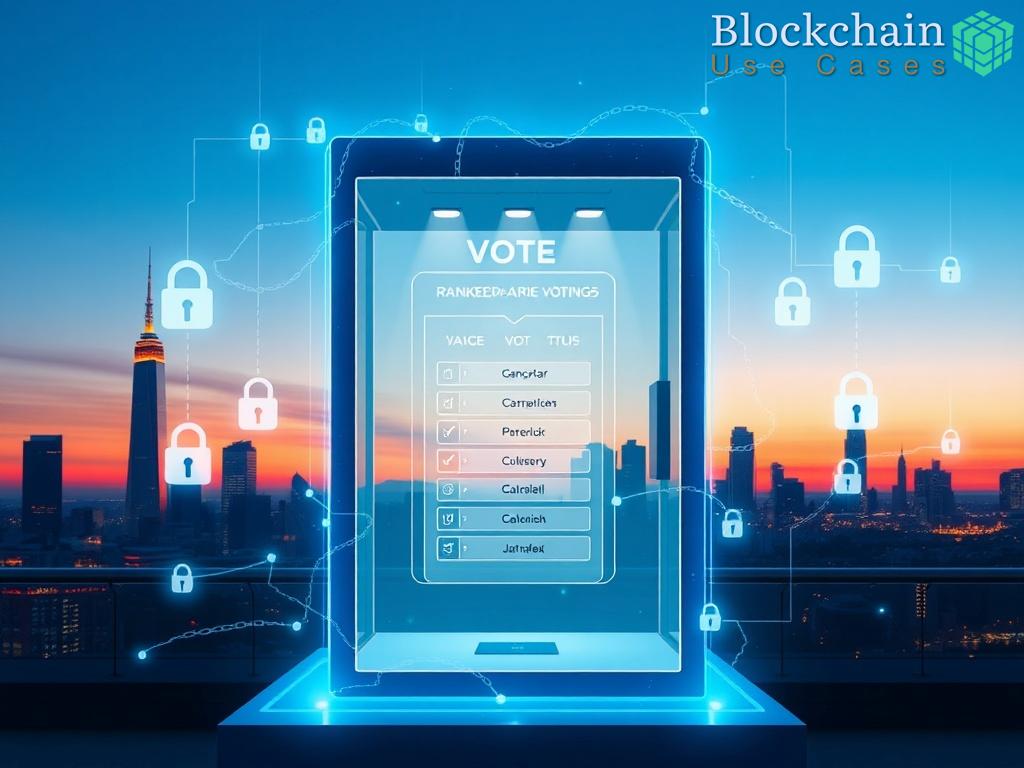Understanding Provisional Ballots
Provisional ballots serve as a safeguard in the electoral process, ensuring that every eligible voter has the opportunity to cast their vote, even when there are questions about their eligibility. These ballots are typically issued when a voter’s registration status is uncertain or when they do not have the required identification at the polls. Understanding the nuances of provisional ballots is essential for both voters and election officials, especially in the context of enhancing their security through innovative technologies like blockchain.
Provisional ballots play a crucial role in maintaining the integrity of elections. They act as a temporary measure that allows voters who might otherwise be disenfranchised to participate in the electoral process. This system not only helps to uphold democratic principles but also ensures that the final vote count is as accurate as possible. In a world where every vote counts, understanding the significance of provisional ballots is more critical than ever.
Provisional ballots come with unique features that differentiate them from standard ballots. Below is a concise overview of their key characteristics:
| Feature | Description |
|---|---|
| Eligibility Verification | Allows election officials to verify a voter’s eligibility after Election Day. |
| Temporary Status | These ballots are not counted until eligibility is confirmed. |
| Accessibility | Ensures that voters without proper identification can still participate. |
| State-Specific Rules | Each state has its own rules regarding the use and counting of provisional ballots. |
By understanding these features, voters can navigate the provisional ballot process more effectively, ensuring that their voices are heard on election day.
Blockchain Technology Overview
![]()
As the demand for secure and transparent voting processes grows, blockchain technology emerges as a formidable ally in the realm of electoral integrity. This decentralized digital ledger offers an innovative approach to tracking provisional ballots, effectively addressing concerns related to voter disenfranchisement and ballot security. By leveraging the unique properties of blockchain, election officials can enhance the reliability and transparency of provisional ballot management.
At its core, blockchain is a distributed database that maintains a continuously growing list of records, known as blocks, which are linked and secured using cryptographic principles. Each block contains a timestamp and a cryptographic hash of the previous block, forming an unalterable chain. This characteristic makes blockchain exceptionally resistant to tampering, thereby providing a high level of security and trust.
The integration of blockchain technology into the management of provisional ballots offers several compelling advantages:
- Enhanced Security: The decentralized nature of blockchain minimizes the risk of unauthorized access and fraud, ensuring that provisional ballot data is protected.
- Transparency: Voter eligibility and ballot tracking can be made transparent to authorized parties without compromising voter privacy, fostering trust in the electoral process.
- Real-Time Monitoring: Blockchain allows for real-time updates and tracking of provisional ballots, enabling election officials to quickly verify and count ballots once eligibility is confirmed.
- Immutable Record-Keeping: Once a provisional ballot transaction is recorded on the blockchain, it cannot be altered, providing a reliable audit trail for future verification.
The future of provisional ballot management is poised for transformation with the adoption of blockchain technology. As election officials and policymakers explore its potential, it is crucial to consider the implications for voter trust, election integrity, and the overall democratic process. Blockchain not only promises to streamline provisional ballot tracking but also to fortify the electoral framework against emerging challenges in modern voting systems. The journey towards fully integrating blockchain into electoral processes is just beginning, yet its potential to reshape the landscape of voting is undeniable.
Benefits of Blockchain in Ballot Tracking
As the landscape of electoral processes evolves, the introduction of blockchain technology has sparked significant interest among election officials and voters alike. This innovative approach to provisional ballot tracking not only addresses existing vulnerabilities but also enhances the overall integrity of the voting system. By leveraging its unique features, blockchain offers a range of benefits that can revolutionize how provisional ballots are managed, ensuring that every vote counts without compromise.
Uncompromised Security and Integrity
One of the most compelling benefits of blockchain technology is its inherent ability to provide unmatched security. With its decentralized architecture, the risk of unauthorized access to ballot data is significantly minimized. Unlike traditional systems that may be susceptible to hacking or manipulation, blockchain ensures that each record, once created, remains immutable. This means that provisional ballots, once logged on the blockchain, cannot be altered or deleted, safeguarding the integrity of the electoral process. Such robust security measures instill greater confidence in voters, knowing that their ballots are protected from potential threats.
Enhanced Transparency and Trust
Blockchain technology fosters an environment of transparency that is crucial in the electoral arena. With the ability to track provisional ballots in real-time, voters and election officials can access verified information regarding ballot status and eligibility checks. This transparency not only demystifies the voting process but also empowers voters by allowing them to monitor their ballot from casting to counting. In an era where trust in electoral systems is paramount, blockchain serves as a beacon of accountability, ensuring that all stakeholders can verify the legitimacy of the voting process without infringing on voter privacy.
Efficient and Timely Processing
The integration of blockchain into provisional ballot tracking also streamlines the verification process. Traditional methods often involve delays due to manual checks and a lack of centralized information. However, with blockchain, election officials can perform eligibility checks swiftly and efficiently. The decentralized nature of blockchain allows for immediate updates concerning a voter’s status, meaning that provisional ballots can be counted without unnecessary delays once eligibility is confirmed. This efficiency not only accelerates the final vote tally but also enhances the overall voter experience, making the process smoother and more reliable.
Implementation Challenges and Solutions
As the potential of blockchain technology to revolutionize provisional ballot tracking becomes increasingly evident, it is essential to address the challenges that may arise during its implementation. The transition from traditional systems to a blockchain-based framework is fraught with obstacles that require careful planning, strategic solutions, and collaboration among stakeholders. Understanding these challenges will be crucial for election officials, policymakers, and voters alike.
One of the primary challenges in implementing blockchain for provisional ballot tracking lies in the technical complexity of the technology itself. Many election officials may lack the requisite knowledge and expertise to effectively integrate and maintain blockchain systems. This knowledge gap can lead to improper implementation, which may undermine the integrity of the electoral process.
To address this issue, comprehensive training programs must be developed for election officials at all levels. These programs should cover not only the technical aspects of blockchain but also its implications for election integrity and voter trust. Collaboration with technology providers and blockchain experts will be essential in fostering a skilled workforce capable of navigating this new landscape.
The incorporation of blockchain technology into provisional ballot tracking necessitates a thorough examination of existing legal and regulatory frameworks. Currently, many states have specific laws governing the management of ballots, and the lack of standardized regulations for blockchain can create confusion and resistance. This may lead to inconsistent adoption across jurisdictions, further complicating the electoral landscape.
To overcome these regulatory hurdles, it is vital for lawmakers to work closely with election officials and blockchain advocates to establish clear guidelines that accommodate the unique characteristics of blockchain technology. This collaborative approach can help create a unified framework that fosters consistency and encourages widespread adoption.
For blockchain to be effective in provisional ballot tracking, voters must have confidence in its security and transparency. Misinformation and skepticism surrounding new technologies can hinder voter acceptance and participation. Therefore, it is critical to implement robust communication strategies that educate voters about how blockchain works and its benefits for the electoral process.
Engaging community leaders, hosting informational sessions, and leveraging social media platforms can facilitate a dialogue between election officials and voters. By providing clear and accessible information, election officials can demystify blockchain technology and foster trust among voters. Ultimately, building this confidence is essential for the successful implementation of blockchain solutions.
In summary, while the integration of blockchain technology into provisional ballot tracking presents numerous challenges, strategic solutions can pave the way for a more secure and efficient electoral process. By investing in education, establishing clear regulations, and promoting transparency, stakeholders can harness the power of blockchain to enhance the integrity of elections.
Future Prospects of Blockchain in Elections
The rapid advancement of technology continuously shapes the way we conduct elections, and blockchain stands at the forefront of this evolution. As we delve into the future prospects of blockchain in elections, it becomes evident that this technology has the potential to redefine how provisional ballots are managed. By creating a more secure, transparent, and efficient voting process, blockchain could not only bolster public trust in elections but also enhance overall voter engagement.
The future of blockchain in elections is not limited to merely tracking provisional ballots; it encompasses a broad spectrum of applications that can revolutionize the electoral landscape. Here are some innovative uses:
- Voter Registration: Blockchain can streamline the voter registration process by providing a secure and verifiable database, reducing instances of fraud and errors.
- Ballot Casting: Smart contracts could facilitate secure and automated ballot casting, ensuring that each vote is accurately recorded and counted.
- Result Transparency: Blockchain can offer real-time access to election results, enabling voters to independently verify the accuracy of vote counts.
While the prospects of blockchain in enhancing electoral processes are promising, several challenges must be addressed to ensure successful implementation. These include technical barriers, regulatory concerns, and the necessity for widespread public education. However, overcoming these hurdles presents a unique opportunity for stakeholders to collaborate in designing a more resilient electoral framework.
| Challenges | Opportunities |
|---|---|
| Lack of technical understanding | Investment in training for election officials |
| Regulatory inconsistencies | Creation of standardized protocols |
| Public skepticism | Enhanced voter outreach and education |
In conclusion, the future of blockchain in elections is laden with potential. By embracing this technology, election officials can work towards creating a more inclusive, trustworthy, and efficient electoral process that empowers voters and strengthens democracy.




